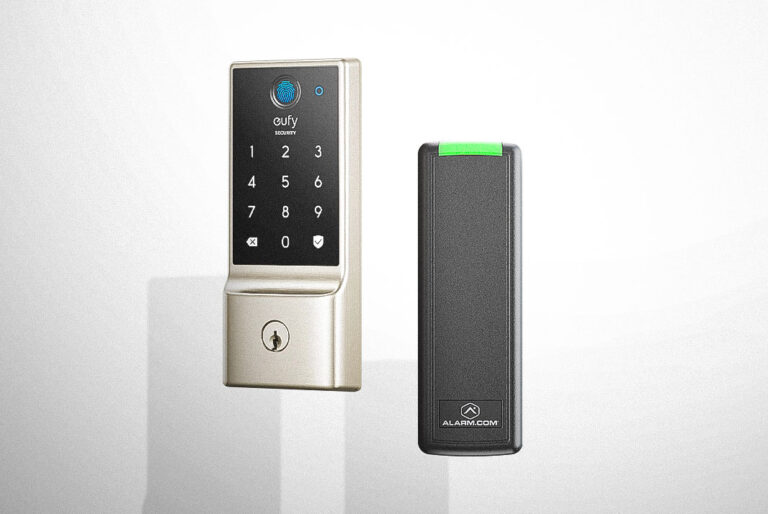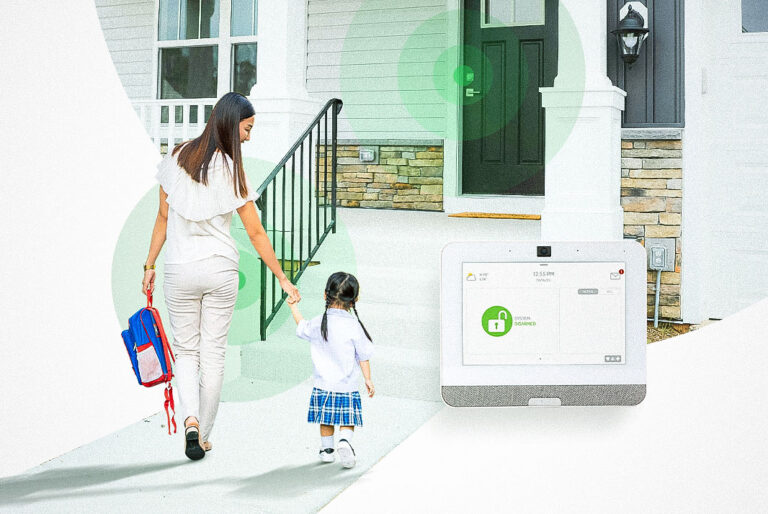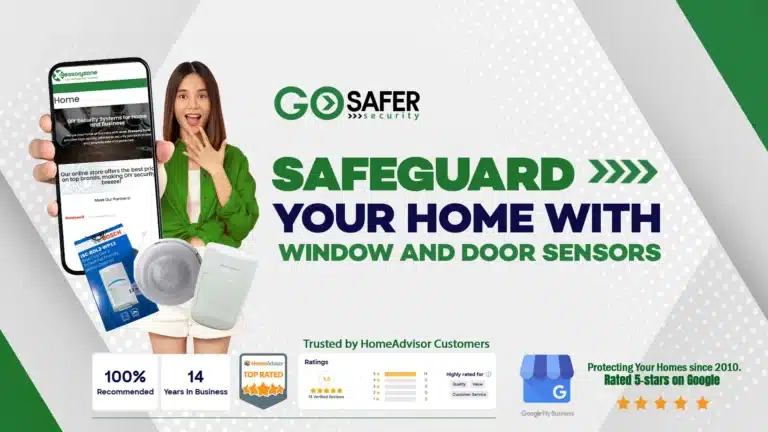As technology advances, businesses are presented with an ever-growing array of options for managing their operations. One of the most powerful and versatile tools available today is the proximity card reader system, which allows businesses to add a layer of security and convenience to their operations.
In this blog, we’ll be exploring five reasons why businesses should consider investing in a proximity card reader system. From increased security to improved efficiency, learn why a proximity card reader system can be the perfect addition to any business.
Table of Contents
ToggleWhat is a Proximity Card Reader System and How Does it Work?
A Proximity Card Reader System is an automated security system that uses radio frequency identification (RFID) technology to control access to secure areas. A proximity card readers work by placing a card, typically containing an embedded microchip and antenna, near the reader device. The reader emits electromagnetic fields which detect and read the information stored in the chip on the card. Upon successful authentication, the system allows access to approved personnel or resources.
Some access control systems use ‘proximity cards’ in place of, or in addition to, PINs. These cards have magnetic stripes and can be swiped through a special card-reading device. The proximity card can then be used to open the door without having to type in a pin number.
The proximity cards are usually single-use and are only valid on that particular system. So, if a person with a managed proximity card leaves the company, it will not be possible for them to use their card on a different location’s system. If a company wishes to use the same system at multiple locations, it must pay for the cards and have each one programmed into its system.
Proximity cards are more common in smaller organizations and non-profits, whereas larger companies prefer to use PINs due to their increased flexibility.
Some organizations use both cards and a PIN as a backup safety measure, meaning if someone forgets their card or loses it, they can still gain access to the area. Additionally, if an employee does not have the card handy, they cannot gain access and they will have to instead type in the PIN number.
Proximity cards are relatively easy to lose, so extra precautions must be taken to ensure they are not lost or broken.
What are the Different Types of Proximity Card Reader Systems?
Proximity card readers are RFID (radio frequency identification) devices used at access doors. Each one uses a specific technology, reads a specific range of cards, and communicates with the access control software. As you can imagine, there’s quite a bit of variety when it comes to the different models, so let’s take a closer look at them.
1. Card Readers & Access Control System
Access controllers typically connect to a computer, and communicate with one or more card readers. They allow for entry management for up to eight doors and typically scan a proximity tag or key card to activate custom behavior.
Proximity Card Readers
Proximity readers don’t use cards at all, but rather detect objects up to a defined proximity. The most common use for proximity readers is with vaults, so a person can open one’s safe without ever touching it.
2. Magnetic Stripe Reader
Magnetic stripe readers read information from credit cards and payment tokens, such as gift cards. They’re also used for legacy access control, and typically communicate with access controllers.
3. Biometric Readers
Biometric readers, aka fingerprint readers, use fingerprint scans to identify a person. They’re commonly used for access control at sensitive government facilities, and typically communicate with access controllers.
5 Reasons Your Business Needs a Proximity Card Reader System
When we’re talking about access control, there are a couple of different types of systems. There are three ways to identify who’s coming and going:
-
-
facial recognition
-
-
-
fingerprint scan
-
-
-
access card/badge/proximity card
-
All have their pros and cons, but proximity card readers are without a doubt, the most user-friendly option for businesses.
1. Convenience
The proximity reader is easy to use and requires no physical interaction. This means users can access a building or restricted area without having to remember a passcode or take the time to scan their fingers. This makes it much easier for businesses to manage who is coming and going.
2. Security
Proximity cards provide an additional layer of security for businesses. They require users to register their cards with the system before they can gain access. This eliminates the possibility of unauthorized individuals gaining access to restricted areas.
3. Cost
Proximity card readers are significantly cheaper than facial recognition systems or fingerprint scanners. This makes them a great choice for businesses that want to secure their premises without breaking the bank.
4. Durability
Proximity cards are designed to be durable and long-lasting. They are also resistant to wear and tear, which allows them to work reliably for long periods of time. This makes them a great choice for businesses that need reliable access control solutions.
5. Flexibility
Proximity cards can be used in a variety of ways. They can be programmed to provide access to different parts of the building or to grant different levels of access to different individuals. This allows businesses to customize their security systems to meet their specific needs.
Tips for Choosing a Proximity Reader System for Your Business
When it comes to security, there are some great options when it comes to proximity readers. There are also a lot of options available, and it can be hard to figure out which option is right for you. Therefore, we have created a list of tips for choosing the right proximity reader system for your business.
1. Determine Your Needs: Before you start shopping for a proximity reader system, it’s important to determine what your needs are. Think about what level of security you need, how many users you need to accommodate, and what type of access you want to provide.
2. Look for Reliable Proximity Technology: When it comes to security, you want a system that is reliable and secure. Look for a system that is easy to use and provides a high level of security.
3. Consider the Proximity Card Reader Cost: Cost is always an important factor when it comes to security systems. Be sure to compare prices and features to ensure you are getting the best value for your money.
4. Research Your Options: Once you have determined your needs, you can begin to research the different types of prox card readers and the features they offer. This will help you to find the best system for your business.
5. Choose an Experienced Proximity Reader System Company: When it comes to security, you want to work with a company that has the experience and can provide you with quality customer service. Be sure to do your research and read reviews before making a decision.
What are the Benefits of Having a Proximity Card Reader System in Your Business?
No matter how big or small your business is, protecting it from potential threats is vital. Aside from installing a burglar alarm and security cameras, having a proximity card reader system will add an extra layer of protection for your business.
Proximity card readers are electronic locks, commonly referred to as swipe cards. They’re used in lieu of keys and are easy to program.
These are the benefits of having a proximity card reader system in your business
– Require authorization: By swiping your proximity card, you unlock access to certain areas of your property. If someone is unauthorized to access the area, the keypad won’t be unlocked. This stops unwelcome guests and requires guests to be authorized or approved by you.
– Multiple uses: Many proximity card readers can be programmed to use for multiple purposes. For example, you could use a proximity card reader to secure your front door, your office door, or your warehouse door. You could also use it for employee lockers.
– Keypad access: Some proximity card readers are accompanied by keypads. This means you could also manually enter your code if your proximity card reader malfunctions.
– Low maintenance: Most proximity card readers are programmed by the owner. This makes setup and maintenance easy. There are no batteries to replace and you don’t have to replace the entire unit if it becomes faulty.
– Cost-effective: Proximity card readers are relatively inexpensive to purchase and install. They also require minimal maintenance.
– Durable: Proximity card readers are usually built with durable materials that can withstand moisture and other environmental conditions. They are also designed to last for years.
– Increased security: Proximity card readers can help increase security by providing access to only those who have the proximity card or code.
Conclusion
A Proximity Card Reader System is a must-have for any business looking to increase security, reduce costs, and improve productivity. With Go Safer Security’s access control system installation services in Maryland, you can ensure your business is secure and up to date with the latest technology. Our experienced team of professionals will help you choose the right system for your business, and you can rest assured knowing your business is in good hands. So why wait? Contact us today to learn more and get your business secure with a Proximity Card Reader System.







